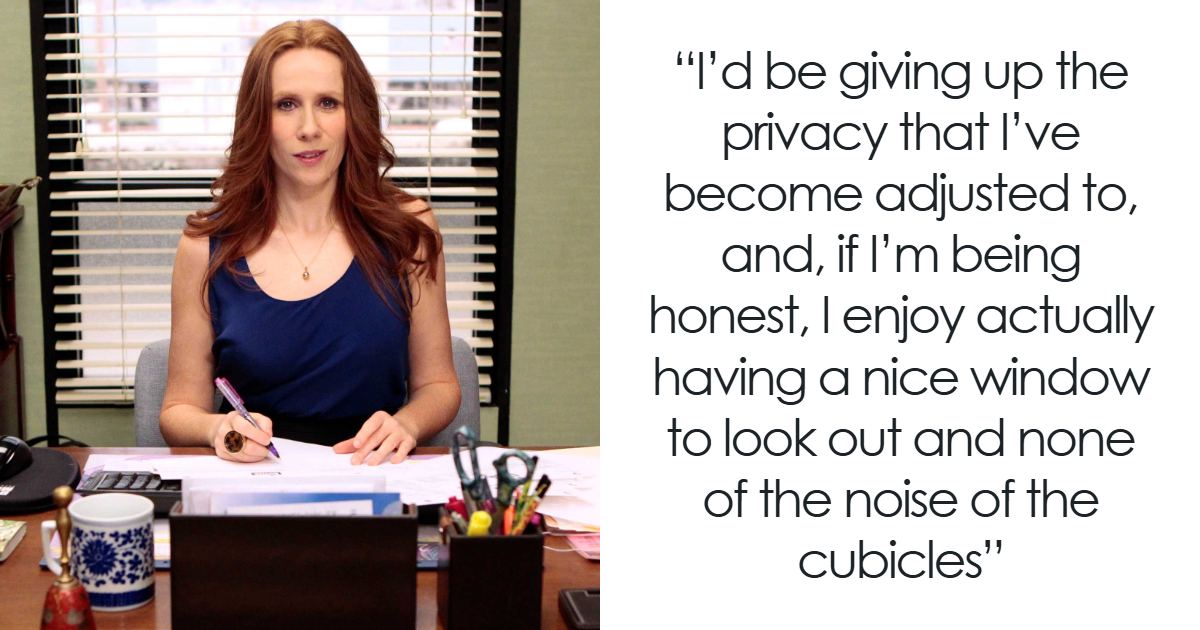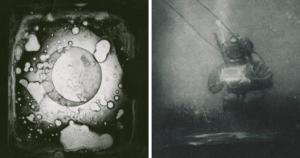On August 23, 1966, humanity received a breathtaking new perspective on its place in the cosmos. Transmitted by the Lunar Orbiter I spacecraft as it swung around the Moon, this black-and-white image was the very first view of Earth captured from the lunar vicinity. The photograph, showing a crescent Earth hanging in the blackness of space above the barren lunar surface, was a stunning technical feat that forever changed how we see our home planet.
ADVERTISEMENT
ADVERTISEMENT
This dramatic 1908 photograph captures the immediate, tangled aftermath of the world’s first fatal airplane crash. The experimental Wright Flyer, being demonstrated for the U.S. Army at Fort Myer, Virginia, went down when a propeller shattered mid-flight. While Orville Wright, who was piloting, survived with serious injuries, his passenger, Army Lieutenant Thomas Selfridge, did not, tragically becoming the first person to perish in a powered aircraft accident.
After being guided to the overgrown ruins in 1911 by locals, explorer Hiram Bingham III returned the following year to begin clearing the site, and it was then that he captured this historic photograph. The image, showing only a portion of the now-famous Inca citadel, represents the very first time Machu Picchu was systematically documented on film. It was through these early photographs that Bingham introduced the stunning “lost city” to the rest of the world.
ADVERTISEMENT
In 1842, Prince Albert sat for what would become the earliest surviving photograph of a British royal. The portrait was taken at a studio in Brighton using the daguerreotype process and was commissioned by the prince himself as a personal item for Queen Victoria. Upon receiving the cased, intimate image, the Queen recorded her simple but positive review in her journal, noting, “Saw the photographs which are quite good.”
This 1848 daguerreotype provides a quiet, rural view of what was then known as the Old Bloomingdale Road, a street that would eventually become the bustling, world-famous Broadway. The photograph captures a tranquil New York estate at a time when much of upper Manhattan was still countryside.
ADVERTISEMENT
ADVERTISEMENT
Taken during the Mexican-American War, this 1847 daguerreotype is one of the earliest photographs ever taken of an armed conflict. It captures a calm moment amidst the violence, showing American General John E. Wool and his staff making their formal entry into the city of Saltillo after its capture. The image serves as a powerful early example of photography’s new role in documenting not just battles, but the significant political movements of war.
The question “What would happen if computers could look at pictures?” led directly to the creation of the world’s first digital image in 1957. Computer pioneer Russell Kirsch and his team developed a drum scanner to feed visual information into a programmable computer. For their first test subject, Kirsch scanned a photograph of his infant son, Walden, creating a grainy, 176×176 pixel black-and-white image that marked the very beginning of digital photography.
ADVERTISEMENT
While the exact date is debated, this 1843 daguerreotype holds the distinction of being the first surviving photograph of a United States president. The portrait shows a stern and elderly John Quincy Adams, captured nearly 15 years after he had left the White House. It’s a historic and remarkably humanizing image, offering a direct visual connection to one of America’s founding-era statesmen.
This 1844 portrait shows Louis Daguerre, the artist and inventor who gave his name to the first commercially successful photographic process. After partnering with the original inventor of photography, Nicéphore Niépce, Daguerre refined the technique into the much faster and clearer daguerreotype method. His public announcement of the invention in 1839 sparked a global sensation, effectively launching the age of photography.
ADVERTISEMENT
ADVERTISEMENT
Taken by Louis Daguerre himself in 1838, this view of a Paris street is famous for accidentally capturing the very first photograph of a human being. Because the daguerreotype process required an extremely long exposure time (likely over ten minutes) all the bustling traffic of the Boulevard du Temple became an invisible blur.
Although the original photograph has been lost to time, William Henry Harrison holds the distinction of being the first sitting U.S. president to have his picture taken. That daguerreotype was made shortly after his 1841 inauguration, just before his untimely passing a month later. The image that survives today is a copy made in 1850 and is a photograph of a painted portrait, serving as a historical placeholder for the missing original. $26.00 (as of November 5, 2025 18:43 GMT +00:00 - More infoProduct prices and availability are accurate as of the date/time indicated and are subject to change. Any price and availability information displayed on [relevant Amazon Site(s), as applicable] at the time of purchase will apply to the purchase of this product.) (as of November 5, 2025 18:43 GMT +00:00 - More infoProduct prices and availability are accurate as of the date/time indicated and are subject to change. Any price and availability information displayed on [relevant Amazon Site(s), as applicable] at the time of purchase will apply to the purchase of this product.) (as of November 5, 2025 18:43 GMT +00:00 - More infoProduct prices and availability are accurate as of the date/time indicated and are subject to change. Any price and availability information displayed on [relevant Amazon Site(s), as applicable] at the time of purchase will apply to the purchase of this product.) $12.00 (as of November 5, 2025 18:43 GMT +00:00 - More infoProduct prices and availability are accurate as of the date/time indicated and are subject to change. Any price and availability information displayed on [relevant Amazon Site(s), as applicable] at the time of purchase will apply to the purchase of this product.) $10.00 (as of November 5, 2025 18:43 GMT +00:00 - More infoProduct prices and availability are accurate as of the date/time indicated and are subject to change. Any price and availability information displayed on [relevant Amazon Site(s), as applicable] at the time of purchase will apply to the purchase of this product.)
SkaterTrainers- Skateboard Tricks Fast No Experience Needed- Fun, Safe, and Easy- Ollies, Kickflips and More- All Ages- Accessories Make Great Stocking Stuffers Gifts for Teen Boys and Girls
(4657156)
RIVER OF GOODS Mid-Century Modern Transitional LED Bronze Chrome Ceiling Fan - 52" L x 52" W - Rich Barnwood/Light Driftwood Fan Blades - Metallic Ceiling Fan with Light and Fabric Shade
(4258)
Promixx FORM Sports Water Bottle - Premium BPA Free Water Bottle for Fitness Sports & Outdoors - Sustainable Drinks Bottle with Measurement Markers and Leakproof Lid - 760ml / 26oz (Midnight Blue)
(4151430)
Joking Hazard Enlarged Box Empty Box for Card Storage
(4051639)
Joking Hazard Deck Enhancement #1 - Expansion Pack for Fun Party Games by Cyanide & Happiness, 100 New Hilarious Comic Cards | Perfect for Game Night
(48513139)











































Post Comment